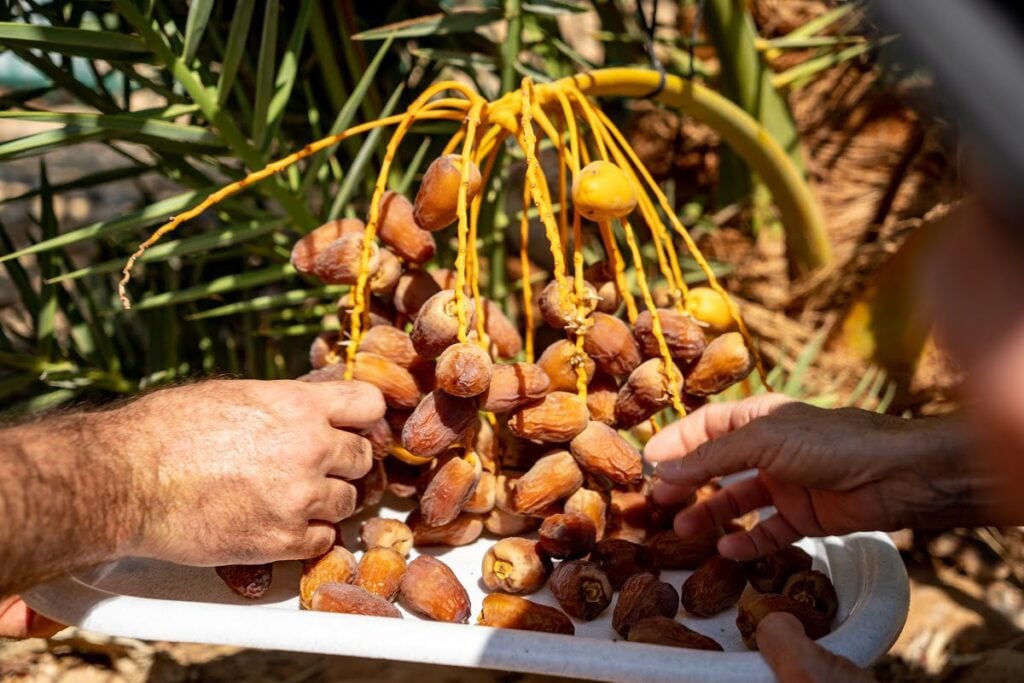The Phoenix dactylifera or the Judean Date Palm was venerated throughout the region in biblical times for its healing properties. Its fruit flourished in thick forests around the Dead Sea and Jordan River basin and was a mainstay of the Judean Desert. The tree and its fruit appeared on coins throughout the region and are mentioned in the Song of Songs and Psalms. The date palm’s fruit was a staple diet in the Judaean Desert for thousands of years, as it provided a source of food and a tree of shelter and shade, and it became a known symbol of the Kingdom of Judah. But did you know that this particular palm was extinct up until scientists found a way to revive it?
In 2005, Dr. Sarah Sallon and Dr. Elaine Solowey of the Arava Institute for Environmental Studies, conducted an experiment to see whether they could cultivate any date palm seeds. The oldest tree to germinate successfully sprouted three weeks later.
What Does Judean Palm Dates Taste Like?
Historical accounts of the dates that grew from the palms in this region describe their large size, sweetness, and medicinal properties. The Roman scribe Pliny the Elder, for example, wrote that; their outstanding property is the unctuous juice which they exude and an extremely sweet sort of wine flavor like that of honey.
Unlike Egyptian dates, these dates could be stored for a long time. This meant they could be exported throughout the Roman Empire.
Sallon and her colleagues discovered that the seeds of ancient Judean dates are more significant than those of modern types since they bore larger fruit. By pollinating females with men, they hoped to replicate the ancient fruit.
After Judea’s battles with Rome in the first and second centuries AD, the region’s date palm crops began to dwindle. Sallon believes that the Judean desert’s hot, dry climate helped preserve the leftover seeds for so long. (Source: New York Times)
How Did the Judean Palm Tree Go Extinct?
It is believed that date cultivation as a commercial fruit export ceased around the year 70 AD when the Romans destroyed the Second Temple.
In his 21-page piece History of the Date through the Ages in the Holy Land, Asaph Goor never mentions any Roman devastation of the date palms, instead citing multiple contemporary reports attesting to date cultivation’s continued extent during the Roman period.
It was only during the Early Arab period, and notably during the Crusades, does Goor notice a drop in date planting, noting that the devastation of the land was particularly hard on the palm plantations.
Human activity was blamed in a 1974 study for the departure of date palms from the Jericho-Ein Gedi region in the 15th century. Still, Goor suggests that climate change may have caused the area’s springs to produce less water, which hampered the water-intensive production of date palms. (Source: New York Times)
What Does Judean Date Palm Tree Symbolize?
In the Arab East, the date palm has long been a symbol of affluence. It has also been linked to fertility. Male and female trees exist, with the latter bearing the desired dates. The tree has been depicted in art, literature, and sacred scriptures. It became a sign of grace and elegance for Jews, and it was frequently given to ladies. (Source: New York Times)
